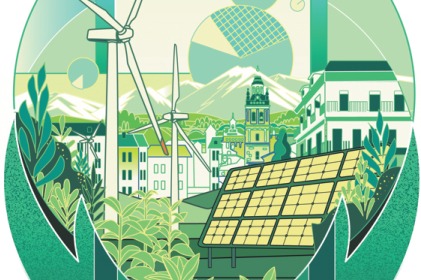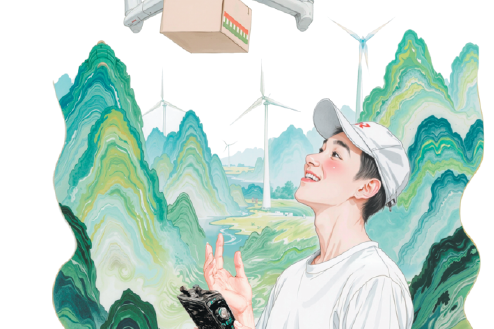Food security high on govt agenda


In the Government Work Report he delivered on Friday, Premier Li Keqiang once again highlighted the importance of seeds and cultivable land in safeguarding China's food security. That China attaches great importance to food security is evident in the fact that it has been highlighted in the No 1 Central Document for the last 18 years.
To better safeguard food security, the emphasis should be on four major issues.
First, the government should take measures to meet people's demand for better quality and more varied types of food. It needs to conduct research on what kinds of food will be more in demand.
The problem for China is no longer feeding its large population, but to feed it well. Thanks to rapid economic growth and improved living standards, Chinese consumers today demand better quality food including meat, eggs and milk.
Chinese people's grain consumption has been declining due to improving living standards, while that of animal products is growing. Yet the combined consumption of grains by the people and feed by livestock indicates an increase in per capita grain consumption in China, in line with the trend in developed countries. In fact, China's overall demand for grains is expected to rise by about 2 percent a year, among which the increase in feed demand will be about 4 percent. So the government should take the necessary steps to ensure the supply of better livestock products, vegetables and fruits.
Second, ensuring food security is a long-term task, and two factors vital to guaranteeing food security are seeds and cropland, as mentioned in the Government Work Report.
It remains a daunting challenge for the authorities to better protect cultivable land as well as increase grain yield by, say, using high-tech in agriculture. It's true that, with only 10 percent of the world's cultivable land, China produced 21 percent of the world's grains, 25 percent of meat, and 30 percent of fruits in 2018, in order to meet the needs of 18 percent of the global population-a marvelous achievement by any yardstick.
Yet the relative scarcity of cultivable land and lack of enough water sources are hurdles in China's path in raising farm output. China's per capita cultivable land is 1.4 mu (933 square meters) just a bit more than half the global average of 2.7 mu. That China imported more than 100 million tons of soybeans in 2020 shows there is still a gap between consumption and output of agricultural products.
Given China's huge population and rising demand for better quality agricultural products, the country has no choice but to increase their yield. The yield of rice and wheat in China is 50 percent higher than the world average.
However, compared with Western Europe and the United States, yields of almost all major crops are lower in China. In particular, the yield of corn and soybean, the two main sources of feed, is only about 55 percent of that in the US.
The relatively low yield level can be attributed to fragmented farmlands, and the scattered distribution of cultivable lands including on mountain slopes.
Besides, farming is mostly done by small rural households. According to the National Bureau of Statistics, about 207 million households cultivate more than 2,023 billion mu of farmland, which means an average of 9.8 mu (0.65 hectares) per household-less than 5 percent of the Europe Union's (14 hectares) and 0.4 percent of the US' (170 hectares).
Innovations in advanced technologies is the only way out of this dilemma, because the gap in yield between China and developed countries is not only due to the scarcity of cultivable land and soil quality, but also due to underdeveloped farm technology.
Third, both the government and the market have important roles to play in safeguarding China's food security. The market mechanism can be used to adjust resource allocation in the short term, in order to balance production with changes in demand. For instance, in case there is a sharp jump in the price of corn this year, market forces will prompt farmers to grow more corn next year.
As for the government, it should better protect cultivable land and promote innovation, so as to boost grain production' capacity in the long run. The increase of overall production capacity cannot be achieved by the market alone. This is exactly where the government should intervene.
For instance, the government should allocate more funds to the existing nationwide farmland improvement and consolidation project. With support from this project, large pieces of farmland are to be built with good irrigation system and more fertile soil conditions, which are prerequisites for large-scale and mechanized farming, and for easier use of advanced technology, for the purposes of increasing output and farmers' income.
In promoting high-tech and innovation, the government has a decisive role to play as well. Most agricultural research work does not generate immediate market returns and needs long-term investments.
In areas of applied research, more attention should be paid to studies on feed crops, feeding efficiency and improving livestock quality. It should also take measures to facilitate changes in consumer habits, for instance, from pork and beef to poultry meat because the latter has a higher nutritional value and much higher feed conversion ratio. Compared with the US and Japan where poultry accounts for more than 50 percent of the total meat consumption, poultry consumption accounts for less than 30 percent of the total in China.
And fourth, China can partly address the problem of scarcity of farmland by importing food products. Since joining the World Trade Organization in 2001, China's import and export of agricultural products have increased manifold-the former by 12 times to $151 billion by 2019 and the latter by four yield to $79.1 billion.
China's foreign trade is expected to largely remain the same in the coming years as it will keep exporting labor-intensive agricultural products such as vegetables and aquatic products, and importing products like soybeans, cotton, animal feed and livestock.
The author is former president of China Agricultural University.
The views don't necessarily represent those of China Daily.

































